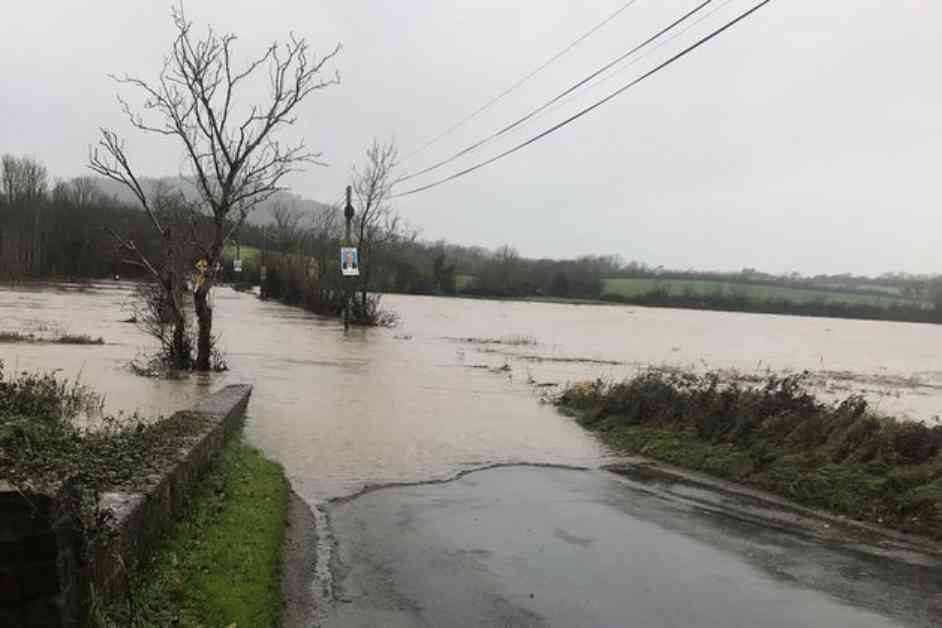Faulty Flood Warning System in Wexford: Storm Bert Causes Concern
Following the recent arrival of Storm Bert, the Ahare River in Castletown experienced severe flooding, causing significant challenges for road users and landowners. The failure of the flood warning system to activate and notify drivers aggravated the situation, highlighting critical deficiencies in its operation.
Issues with the Flood Warning System
Reports indicate that the warning system has previously triggered false alerts of flooded roads, even when the river had not overflowed its banks. Chairperson of the Ahare River and Biodiversity Development Group, Cathy Lee, emphasized the need for an additional sensor in the high-risk flooding area to accurately monitor water levels and provide crucial data for assessing future flood risks.
Concerns About Remedial Works
Recent remedial works at the Ahare Bridge and surrounding areas, including the removal of trees, vegetation, and historic stone walls, exacerbated the flooding during the recent storm. Cathy Lee expressed disappointment in the lack of quality workmanship and attention to detail in these projects, especially considering the ecological significance of the area as a Proposed Natural Heritage Wetland.
Community Engagement and Restoration Efforts
In response to these concerns, there have been calls for restorative works to reinstate the historic stone walls and address the vulnerabilities created by the removal of vegetation along the riverbanks. Community members are pushing for increased interaction with Wexford County Council to ensure that future projects align with the conservation efforts and cultural heritage of the area.
—
As I stood by the flooded Ahare River in Castletown, listening to the rushing waters and witnessing the aftermath of Storm Bert, I couldn’t help but feel a sense of urgency and concern for the community. The failed flood warning system had left many road users stranded, highlighting the critical need for reliable infrastructure in the face of natural disasters.
Reflecting on Cathy Lee’s passionate plea for improved monitoring and restoration efforts, I was struck by the importance of preserving our natural heritage and engaging with local communities in decision-making processes. The delicate balance between progress and conservation became evident as the riverbanks lay vulnerable, awaiting proactive measures to mitigate future flooding risks.
In the midst of these challenges, there is hope for positive change through collaborative efforts and a shared commitment to safeguarding our environment. By learning from past mistakes and prioritizing community voices, we can pave the way for a more sustainable future where nature and development coexist harmoniously. Let us take this opportunity to reflect on our responsibilities as stewards of the land and work together towards a resilient and inclusive approach to environmental management.
















